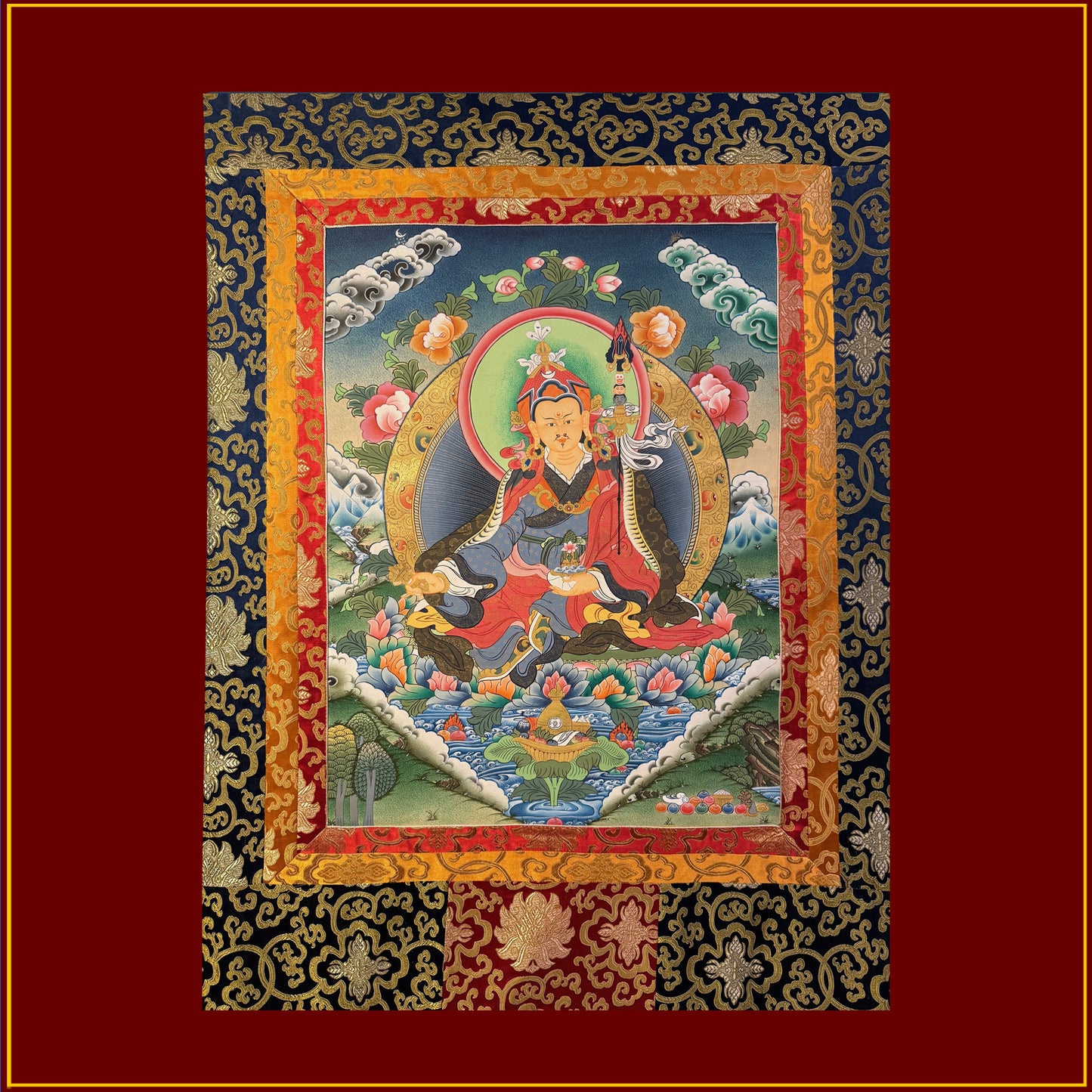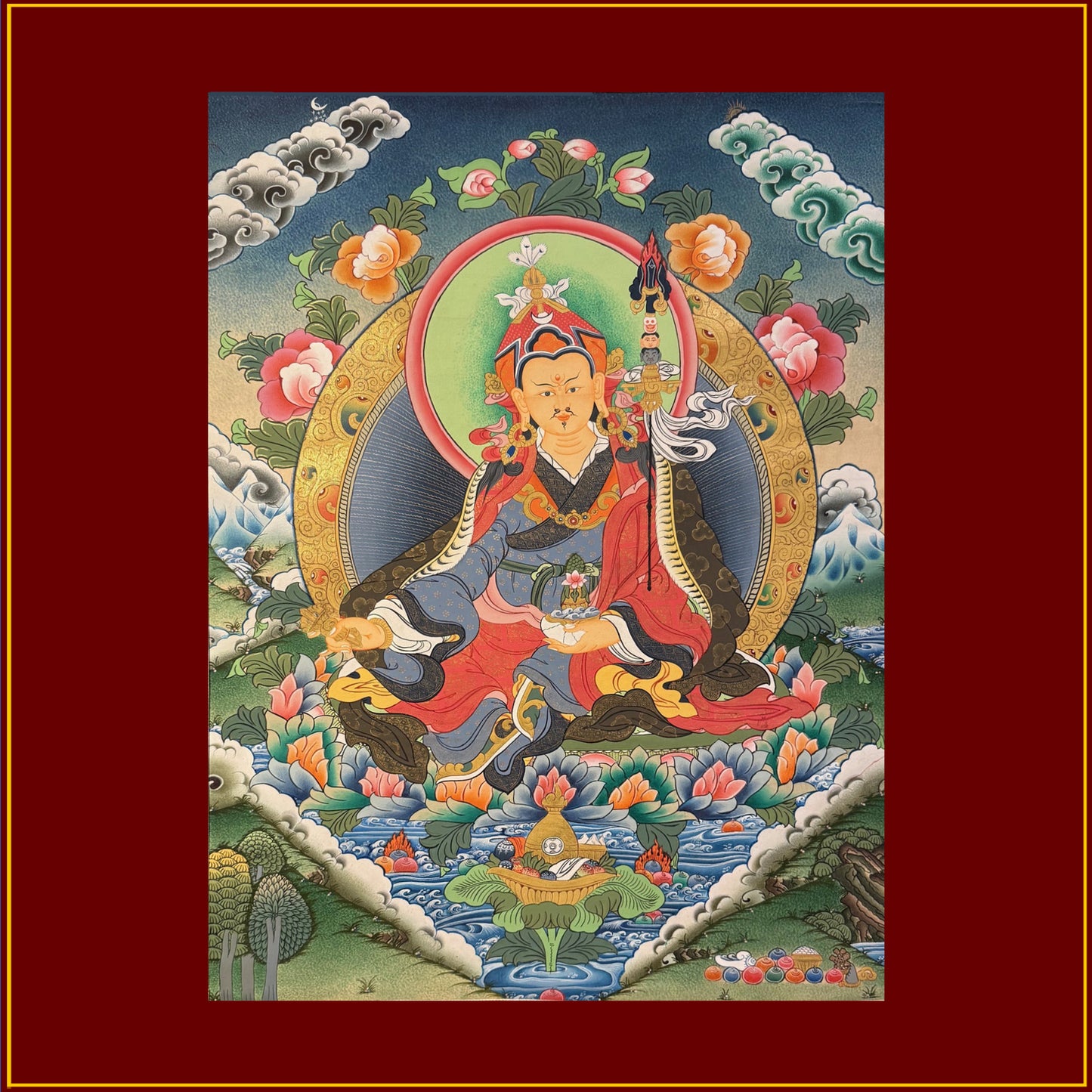Guru Rinpoche
Guru Rinpoche
Share
This is a fairly large thangka painting. Guru Rinpoche is depicted in the aspect called "Vajra Posture of Subjugation." The vajra in the lowered right hand shows that Guru Rinpoche is firmly grounding awakened activity into the world. It’s not abstract wisdom — it’s wisdom applied to subdue harmful forces and protect beings .Placing the hand on the knee expresses readiness and engagement, as opposed to a hand folded in meditation. It’s a gesture of dynamic compassion, willing to act. In Tibetan descriptions, this posture is often called “the gesture of subjugating the three realms” meaning Guru Rinpoche holds mastery over samsara’s appearances — gods, demons, and humans alike.
The skull bowl in Guru Rinpoche’s lap symbolizes impermanence, transformation, the nectar of deathless wisdom, and the inseparability of wisdom and compassion — showing that nothing in samsara lies outside the path to enlightenment.
The khaṭvāṅga staff in the crook of his left arm emphasizes his mastery of the Vajrayana path — the ability to transform all experiences, even death and defilements, into the path of enlightenment. It shows him not as a renunciate monk only, but as a tantric adept who integrates every aspect of existence into realization.
The canvas an which the thangka is painted measures 17"x 23". The 3 color brocade border measures 31"x 51".
Couldn't load pickup availability
Share




